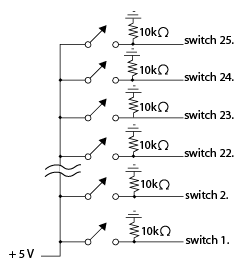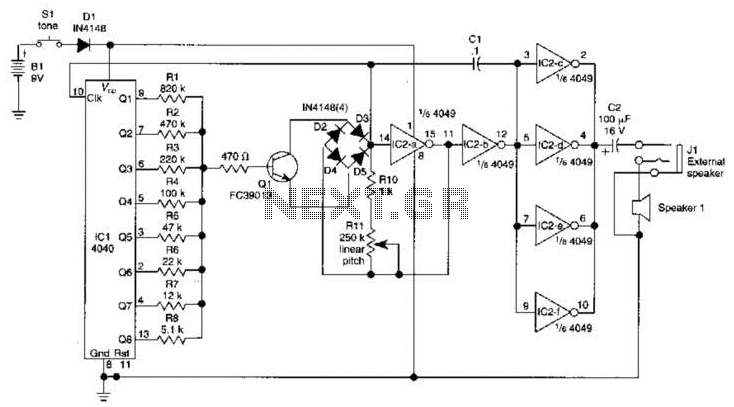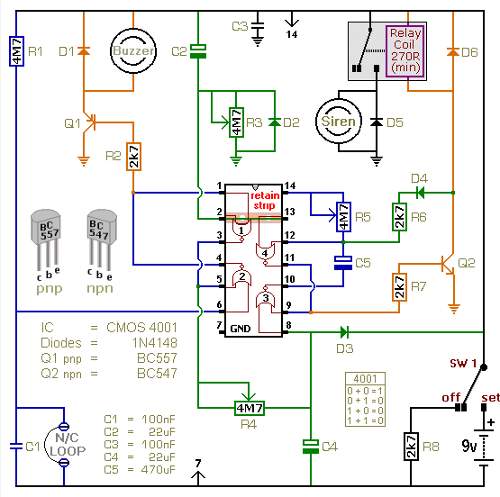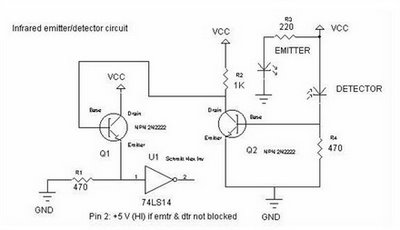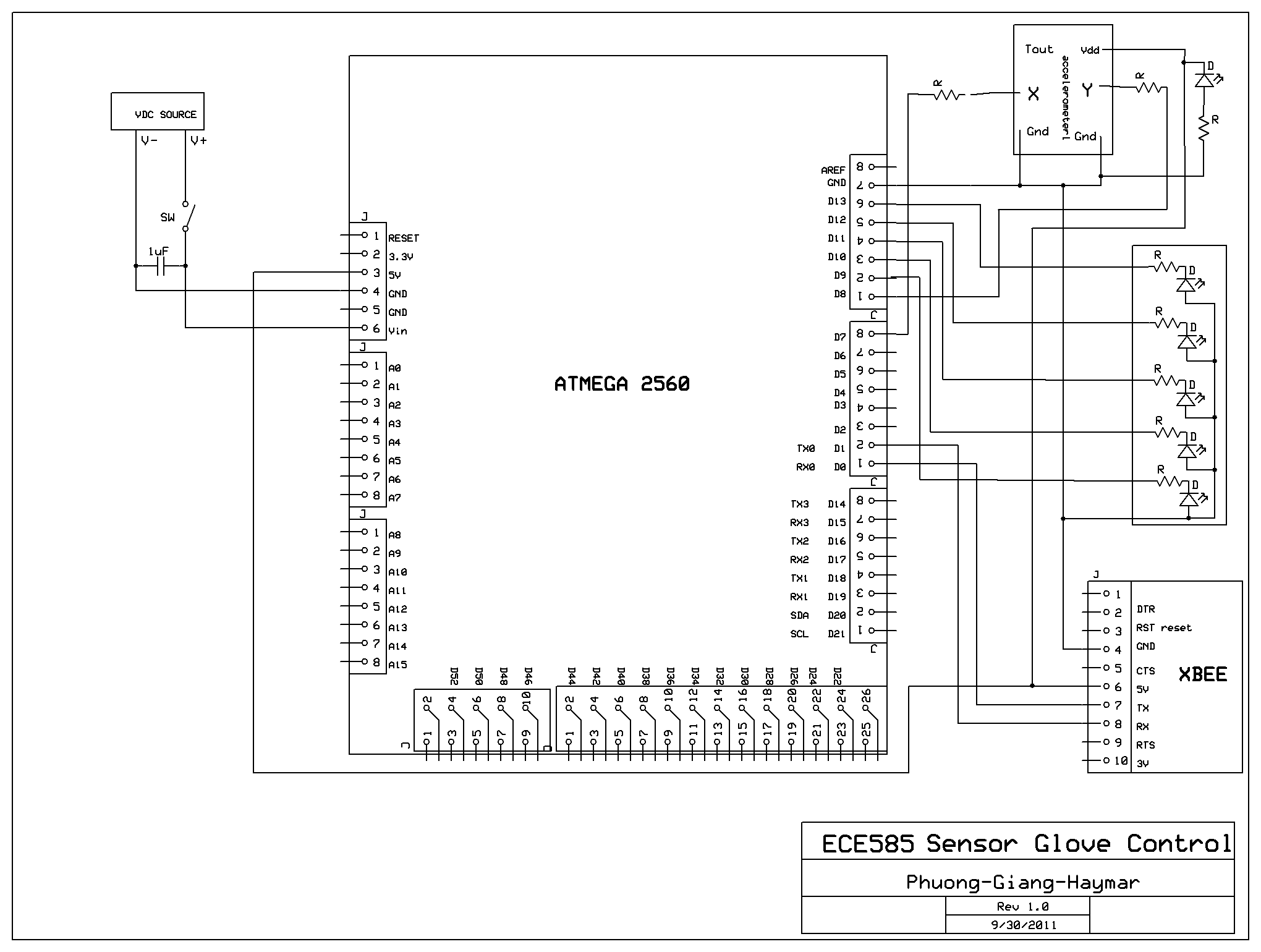
Sound Sensor
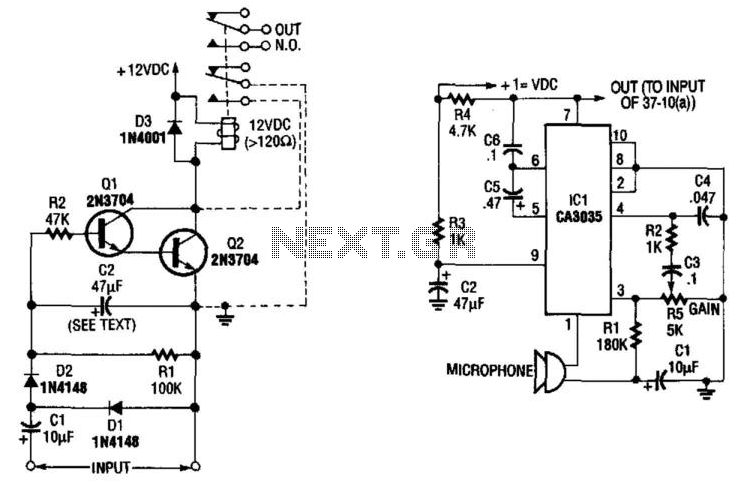
A sound-detecting alarm system can be constructed using a microphone, a high-gain amplifier, and a detector-relay driver. For a latching setup, connect the dotted lines to the relay as indicated in the schematic.
The sound-detecting alarm system utilizes a microphone to capture sound signals, which are then amplified by a high-gain amplifier to ensure that even faint sounds can trigger the alarm. The microphone converts acoustic energy into electrical signals, which are fed into the high-gain amplifier. This amplifier is designed to boost the amplitude of the input signal significantly, providing a stronger output signal that is suitable for further processing.
The output from the high-gain amplifier is then sent to a detector-relay driver. This component is responsible for detecting the amplified signals and activating a relay switch when a sound is detected. The relay acts as a control mechanism that can activate various alarm systems, such as sirens or lights, to alert users of the detected sound.
In the case of a latching setup, which allows the alarm to remain activated until manually reset, specific connections must be made to the relay as indicated in the schematic. These connections ensure that once the alarm is triggered by sound detection, it will stay in the activated state until the user intervenes to reset it. This feature is particularly useful in security applications where continuous monitoring is required.
Overall, this sound-detecting alarm system is an effective solution for various applications, including home security, monitoring environments, and alerting individuals to specific sounds or events. Properly implementing the connections and components as outlined in the schematic will ensure reliable operation and responsiveness to sound stimuli. By using a microphone, high-gain amplifier (Fig. 37-10(b)), and detector-relay driver (Fig. 37-10(a)) a sound-detecting alarm system can be constructed. If you want a latching setup, make the dotted connections to the relay shown in Fig. 37-10(a). 🔗 External reference
The sound-detecting alarm system utilizes a microphone to capture sound signals, which are then amplified by a high-gain amplifier to ensure that even faint sounds can trigger the alarm. The microphone converts acoustic energy into electrical signals, which are fed into the high-gain amplifier. This amplifier is designed to boost the amplitude of the input signal significantly, providing a stronger output signal that is suitable for further processing.
The output from the high-gain amplifier is then sent to a detector-relay driver. This component is responsible for detecting the amplified signals and activating a relay switch when a sound is detected. The relay acts as a control mechanism that can activate various alarm systems, such as sirens or lights, to alert users of the detected sound.
In the case of a latching setup, which allows the alarm to remain activated until manually reset, specific connections must be made to the relay as indicated in the schematic. These connections ensure that once the alarm is triggered by sound detection, it will stay in the activated state until the user intervenes to reset it. This feature is particularly useful in security applications where continuous monitoring is required.
Overall, this sound-detecting alarm system is an effective solution for various applications, including home security, monitoring environments, and alerting individuals to specific sounds or events. Properly implementing the connections and components as outlined in the schematic will ensure reliable operation and responsiveness to sound stimuli. By using a microphone, high-gain amplifier (Fig. 37-10(b)), and detector-relay driver (Fig. 37-10(a)) a sound-detecting alarm system can be constructed. If you want a latching setup, make the dotted connections to the relay shown in Fig. 37-10(a). 🔗 External reference
